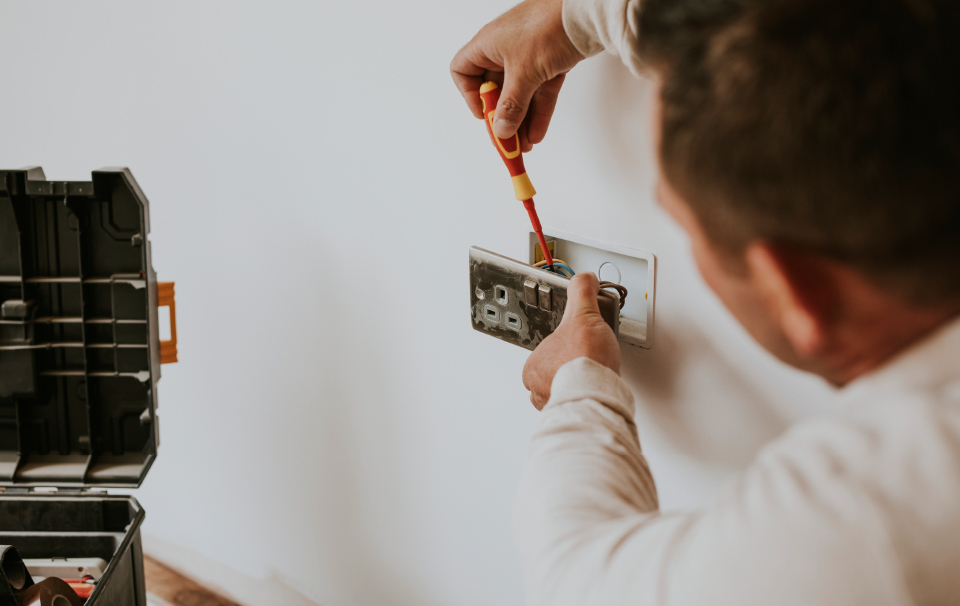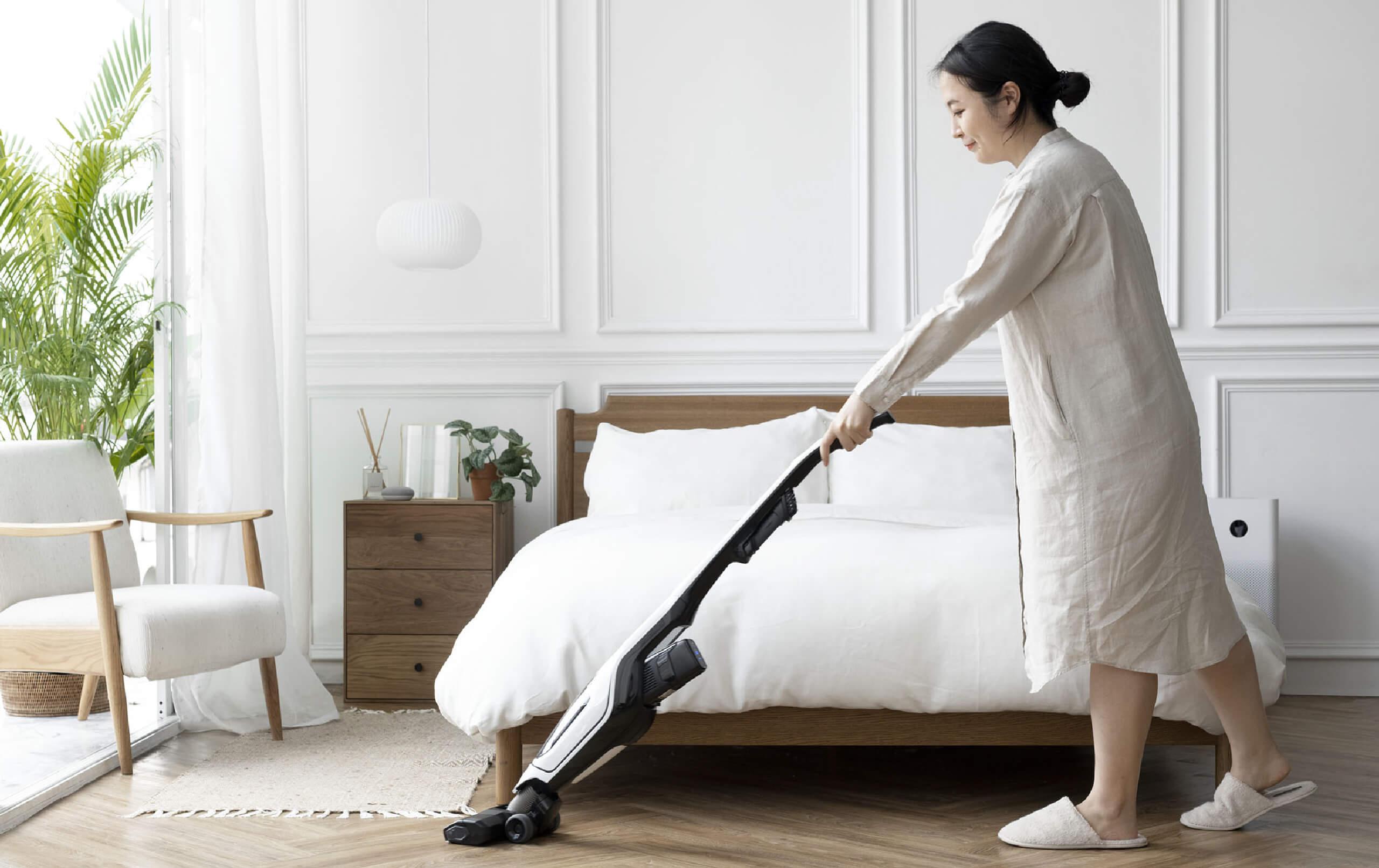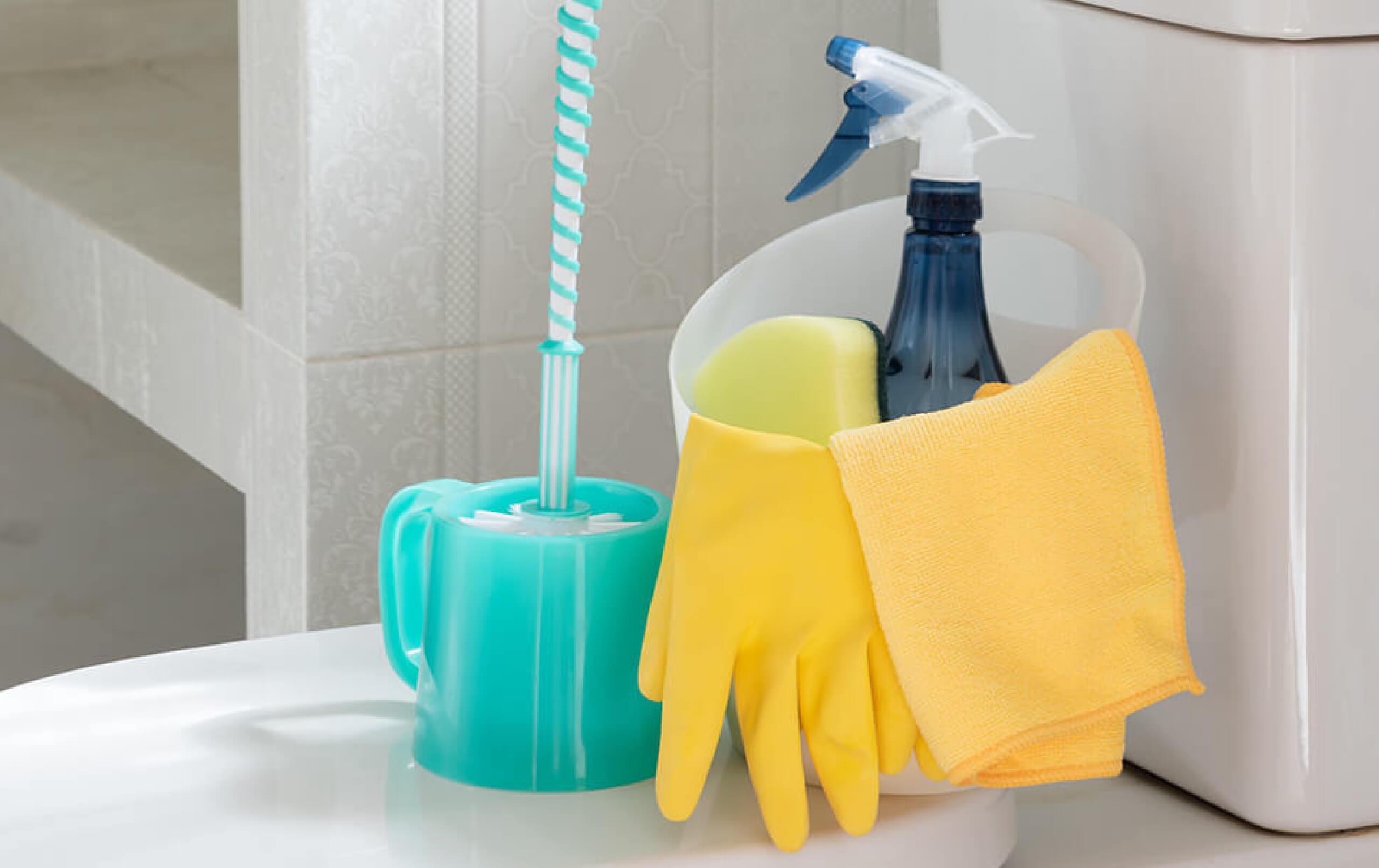The Complete Safety Checklist for New Homeowners
7 minute read
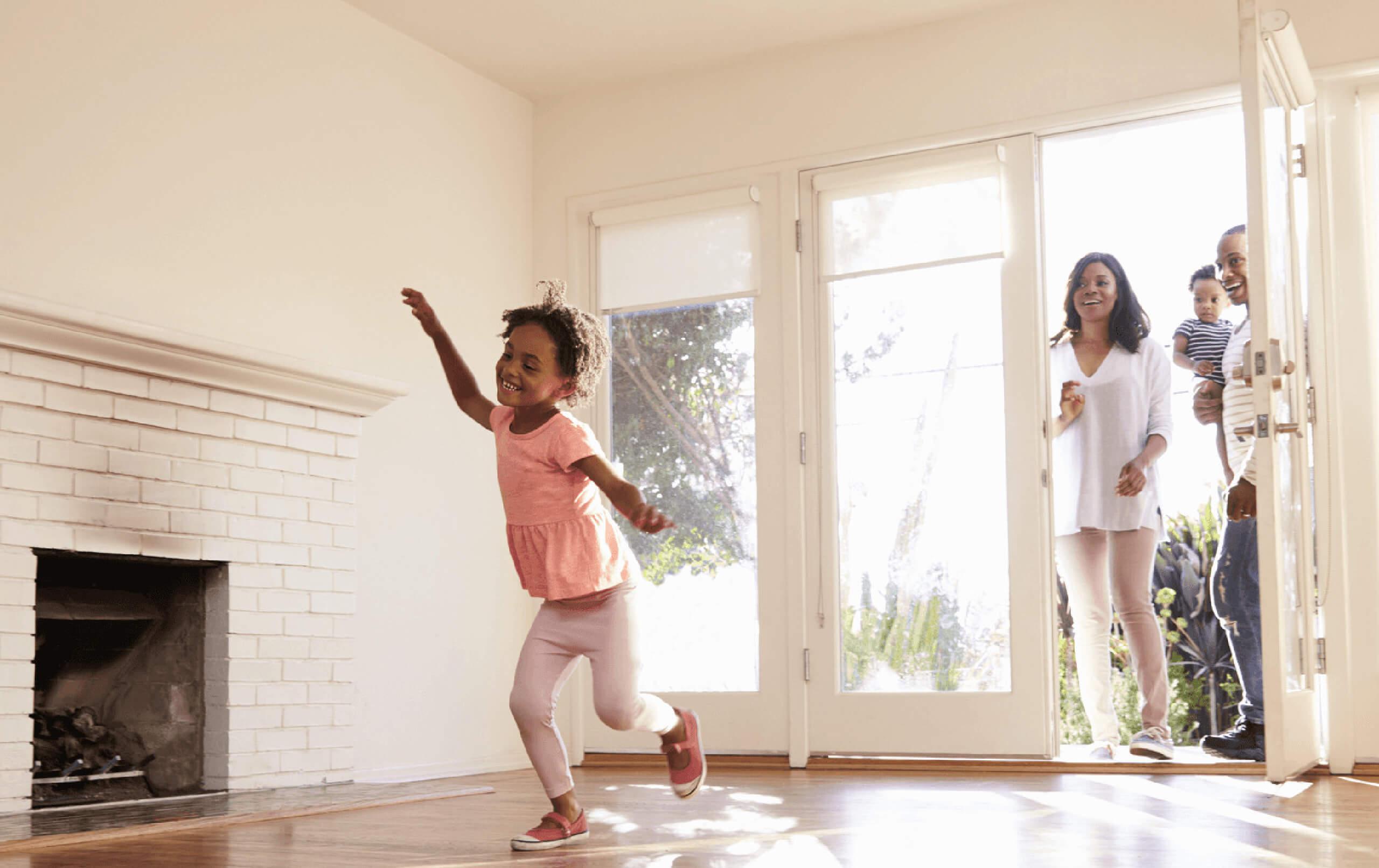
We begin a new chapter of our lives when we move into a new home. It’s where we settle in, create new memories- making our house into our home. Although this entire journey is exciting, it can surely feel overwhelming, too.
From paperwork to packing up and then unpacking at a new, unfamiliar place, there is plenty to tackle for homeowners. While a pre-closing home safety inspection would have revealed any potential hazards, a few hazards may have gotten unnoticed. So a thorough check of the home right after you move in, can ensure that your home is the safest for you and your fellow dwellers.
As a new homeowner, it could be challenging to keep track of all the possible dangers or hazards in a new property. We’ve created a comprehensive checklist of home safety measures that will help you track them and keep your household healthier and safer.
PRO-TIP
Home risks can build up over a period, and therefore it is integral to perform safety maintenance regularly.
1. Theft security check
Home security is an obvious priority for new homeowners. Because you might be new to the area, a reliable security system will make you feel more secure and at peace. Here are some important tasks to enhance your new home’s security.
Change the lock systems
As a new homeowner, the first thing you would want to do is to replace the home locks with new ones. To enhance security further, you can install a smart door lock that gives you more information about movement and even comes with anti-pick mechanisms and auto alarms. Do a trial run with your family member so that everyone is adept at working the lock.
Along with door locks, it is also advisable to make sure that the windows are sturdy and lock properly; your driveway is well-lit; and any small entrances (pet doors, etc.) are secure.
PRO-TIP
Make sure that your house number is visible clearly and there is no obstruction in the pathway.
Install security cameras
A home security camera keeps an eye on the outdoor surrounding areas while you are away. Research and invest in the latest security system to rest assured of your family’s safety. Automated home security systems offer greater flexibility and surveillance options. Here is a comprehensive list of smart home technologies you can try.
2. Electrical safety checklist
Needless to say, electricity is one of the essential elements of every household. From powering up the Wi-Fi to keeping you warm, you will need an uninterrupted connection as soon as you move in.
Check electrical wiring
- Inspect and replace any frayed wires of all electrical appliances and devices.
- Check that no electrical cord runs across the doors, or under the carpets.
- Place plastic safety covers on open electrical outlets if you have pets or toddlers.
- Inspect that the outlets are not crowded with appliances.
Check electrical appliances
- Test if all electrical appliances are in working condition.
- Check if all the major electrical appliances are stable on the ground.
- Replace any flickering light bulbs.
- Ensure that appliances are away from flammable substances or water.
- You can also install smart home devices to save from electrical hazards and save energy.
- Get an electrical safety check done by a professional.
PRO-TIP
To avoid fire and explosions risk, do not overload a single outlet. Place only one high-wattage appliance into a single outlet.
Locate the circuit breakers
Locate the circuit breakers and understand how to operate them in case of emergency. It is advisable to label them appropriately to avoid any confusion during a crisis.
3. Fire safety checklist
Whether you have moved into a new home or a pre-built one, fire hazards pose a significant risk to home safety. Here is a step-by-step safety checklist for home fire safety:
- Make sure that the appliances (like dryer vents) are dust free, since dust bunnies are prone to fires. Periodically check them for overheating or sparks.
- Make sure that the fireplaces are safely installed. Hire a chimney sweep right after you move in to clean and unclog all vents.
- Place a fire extinguisher in every level of the house.
- Check the warranty of the fire extinguisher and verify it every year.
- Be sure to check the extinguisher is damage-free and the nozzle still works.
- Every member of the house should be aware of where the fire extinguisher is located and how to use it.
Check the smoke detectors & carbon monoxide detectors
The two main and must-have safety detectors are smoke detectors and carbon monoxide detectors. When you move into a new place, it is important to check if the detectors are working properly. Here are some quick tips:
- When you first move in, locate the fire alarm and smoke detectors. This would allow you to conduct periodic servicing.
- Have at least one detector and alarm on each level of the house.
- The US Fire Administration recommends testing the batteries monthly and replacing the device every 10 years. Vacuum them from time to time.
- Demonstrate the alarming sound of these detectors to your family members.
Create a fire safety plan
- Create an escape plan with at least two exit routes. Go through the plan with your family members periodically (twice a year recommended).
- Build a safety kit and place it strategically in an accessible place for everyone.
- List down all nearby emergency contacts and make sure everyone has a copy.
PRO-TIP
Place valuables and important documents in a fire-proof safe.
4. Home plumbing safety checklist
As you move in, get a professional inspection done to check for clogs, pipe corrosions, leaks, damaged pipes, etc. A certified plumber will not only check faults but also wipe out the problems that may occur in the future.
Check for water damage or mold
Water damage can pose a threat to the structural integrity of the house. Keep an eye out for any signs of past water damage, like, leaks, discoloration, rust, etc. Black mold is frequently found in dark, moist places that are poorly ventilated. Get a professional cleaning and repair done in this case to avoid future expenses or loss in property value.
Test your sump pump
Sump pumps fail most commonly during the rainy season. A good sump pump system should have a backup in case of breakdowns or outages. Test your sump pump by pouring down a few buckets of water in it. If it is working properly, the pump should kick in. However, if the iron parts have rusted, the pump would not power on or you will notice noise when the pump starts. Before the rainy season arrives, it is a good idea to service the system. Additionally, inspect your downspouts, rain gutters, and get them cleaned.
Insulate exposed exterior pipes
If you are moving in closer to the winter season, insulate exterior pipes with fiberglass, foil, or tubular pipes to avoid burst or frozen pipes in frigid temperatures.
Locate the shut-off valves
Another important thing you want to do is to locate the water valves and learn how to operate them. These shut-off valves are quite helpful to prevent water damage when you experience a pipe burst or when you want to make plumbing repairs.
Apart from these, ensure that your water heater is working properly; and flush it to clear out any sediment or residue.
5. Pet and child safety checklist
A new place is a vulnerable territory for young children and pets. So, one of the first tasks as soon as you move in would be to childproof and animal-proof your home.
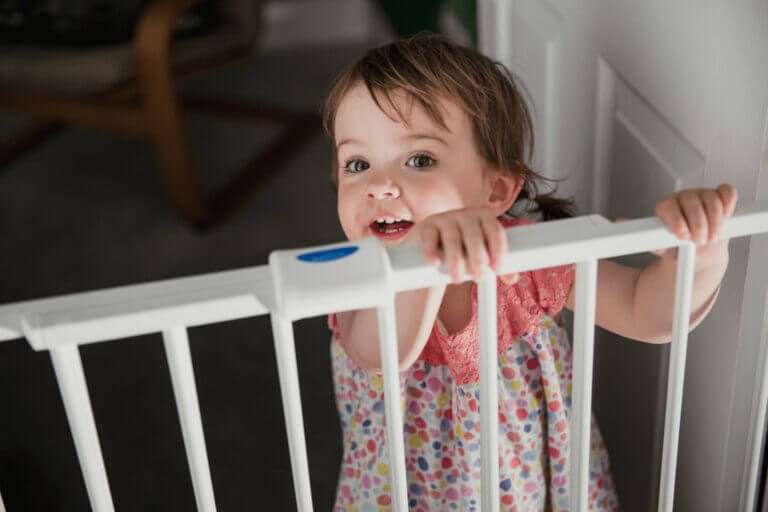
- Start by covering all power outlets of your home right before you move in your stuff.
- Install safety locks on the drawers, toilets, and cabinets.
- As you unpack, keep all sharp objects, tools, and medications out of reach of your kids and pets.
- Install child safety gates on your stairway to protect them from falling on the staircases.
- If your home has a pool, install a fence around it.
- Install doorknob covers so kids don’t get locked in or out.
- Add padding to sharp corners on furniture.
- Install anti slip mats in bathrooms. Add nonskid tape to stairs.
- Make their room comfortable so they are at ease.
- Add motion sensor lights to hallways and stairways.
- Teach your kids how to dial 911 and help them memorize your new home address.
PRO-TIP
Pets or kids can topple furniture easily. Consider anchoring furniture to the walls for maximum safety.
In addition to these, here are some other home safety tips that are easy to miss during the move:
Check for indoor air quality
Often ignored, indoor air pollutants are responsible for respiratory problems and allergies. Maintaining good indoor air quality is therefore essential, especially if you have children or senior citizens at home. The best way to avoid this is to get your new home tested by a professional as they will identify and eliminate indoor air pollutants.
Additionally, ensure that you replace the air filters and clean the vents or ducts.
Pest and termite check
Before buying a new home, be sure to book a pest control inspection. A professional will check both the home interior and exterior for any potential damage caused by pests. Further, they might look for signs like wood-damaging pests (termites), moisture, and other pest activities and suggest treatments for them.
A safe home is a happy home. By following these few easy checklists, you can ensure that you are on top of every aspect of your home, and rest assured that it is the safest for your family.
















